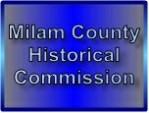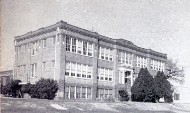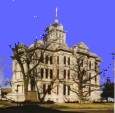




Milam County Historical Commission
Milam County, Texas
Milam County, Texas

‘Now I know who saved my father’s life’
Entire family exists because of 1913 heroism
by Mike Brown - Reporter Editor
Rockdale Reporter - 2014-01-30
Dr. Leroy Swift Jr. isn’t given to showing his emotions. The Rockdale resident is a
veteran of decades of law enforcement, including 27 years with the Kansas City (MO)
Police Department.
But Dr. Swift, 77, admitted to having a few tears in his eyes while reading the Dec. 19,
2013, Rockdale Reporter.
That paper carried a “Christmas Miracle” story about a Rockdale resident named Walter
Suess who saved 44 persons from deadly Brazos River flood waters.
One of them was Dr. Swift’s father, then three years old. Another was his grandmother.
The flood story was familiar in the Swift family but had lacked one key part.
“We never knew the name of the fellow who pulled them out,” Dr. Swift said.
Until now.
FIRST RESCUE - Dr. Swift was born in 1936 in the Two Mile community outside of Gause, and
he grew up in eastern Milam County.
The family had originally lived across the river in the Valley Junction community of
Robertson County but had relocated due to one of those life-changing events 23 years
earlier.
The great flood of 1913. “Here’s what they told me,” Dr. Swift told The Reporter. “The
whole family, including my grandmother, Vater, and my father, Leroy Sr., lived down in
the Little Brazos River Bottom.” “It started to rain and then it really let loose and
they couldn’t get out. They packed into the house and waited for the water to go down,”
he said.
But just the opposite happened. “It got inside the house and they climbed up on tables
and chairs and whatever they could,” Dr. Swift said. “They ended up in the rafters of the
house, looking down into that swirling water. I’m sure they thought they were going to
die.”
One of them almost did before there was any chance to be rescued.
Dr. Swift’s father slipped out of the grasp of his mother and plunged into the water
below. “But the water, inside the house, was swirling and spinning all around in every
direction and he came back up,” Dr. Swift said.
“Someone was able to grab him and give him back to my grandmother.”
Still the water kept rising. “They finally had to chop a hole in the roof and climb on
top,” he recalled.
VOLUNTEER - “They spent two or three days up there,” Dr. Swift said. “They couldn’t do
anything but just wait for whatever was going to happen.”
What happened was nothing short of miraculous.
Rockdale had been cut off from the outside world for most of a week by the flood. But
word of the looming tragedy at Valley Junction had been received and help was sent over
the mostly flooded tracks of the International & Great Northern Railroad.
Tragically, three men had already died trying to rescue the helpless people in the Brazos
bottomland, one of them Henry Martin, vice-president and general manager of the railroad,
who had brought his personal rail car to the area to direct rescue operations.
When a rescue train from Taylor, bound for Valley Junction, stopped in Rockdale and
volunteers asked if anyone wanted to go, Suess climbed on.
SKIFF - And Walter Suess, an apparently mild-mannered plumber and one of the least likely
looking heroes imaginable, climbed aboard.
apparently the only one on the train with the courage to challenge the roiling flood
waters, took a flimsy skiff into the torrent and teamed up with A. E. Stafford, who had
been the fireman on the train which brought Henry Martin to Valley Junction, rescued 44
persons. All of them were African- Americans.
“The story came down through our family, of course,” Dr. Swift said. “When I was little
I’d ask my grandmother to tell it to me again and again.” “Of course we had no idea what
the name of the man who rescued them was,” he said. “Until this story in The Reporter
that is.”
PERSPECTIVE - Of course, Dr. Swift’s father and grandmother are long deceased.
His life took a turn after his law enforcement career.
He felt a call to the ministry, attended Rockdale’s Institute for Teaching God’s Word and
pastored Mt. Tabor Baptist Church.
Somewhat ironically during the writing of his thesis on the Dead Sea Scrolls, in October
2002, it rained for 10 straight days.
“Because of the rain I had no distractions to shift my focus,” he recalled.
He later wrote a book “Odyssey: My Walk to Christ,” which details his compelling family
history.
A family that might not have existed if not for the actions of a Rockdale plumber 100
years ago.
“I think that’s the part where I get kind of emotional,” he said. “If that man, whose
name I now know after all these years, had not done what he did, with God’s help, I would
not be here nor would my children or grandchildren and many other members of my family.”
.
All Credit for this article
goes to Mike Brown
and the
Rockdale Reporter
goes to Mike Brown
and the
Rockdale Reporter
Reporter/Mike Brown
Dr. Leroy V. Swift Jr. holds a copy of the Dec. 19, 2013, Reporter containing the story of the rescue of 44 persons from 1913 flood.
Dr. Leroy V. Swift Jr. holds a copy of the Dec. 19, 2013, Reporter containing the story of the rescue of 44 persons from 1913 flood.
Walter Suess saved almost two dozen Valley Junctions area residents 100 years ago, including Leroy Swift’s father and grandmother.



Leroy Swift Sr. (left) was one of 44 persons pulled from 1913 flood by Rockdale plumber Walter Suess along with grandmother, Vater Swift (below)

Photos courtesy of Dr Leroy Swift Jr
Dr. Leroy V. Swift Jr. holds a copy of the Dec. 19, 2013, Reporter containing the story of the rescue of 44 persons from 1913 flood.
Photo by Mike Brown Rockdale Reporter
Photo by Mike Brown Rockdale Reporter
.